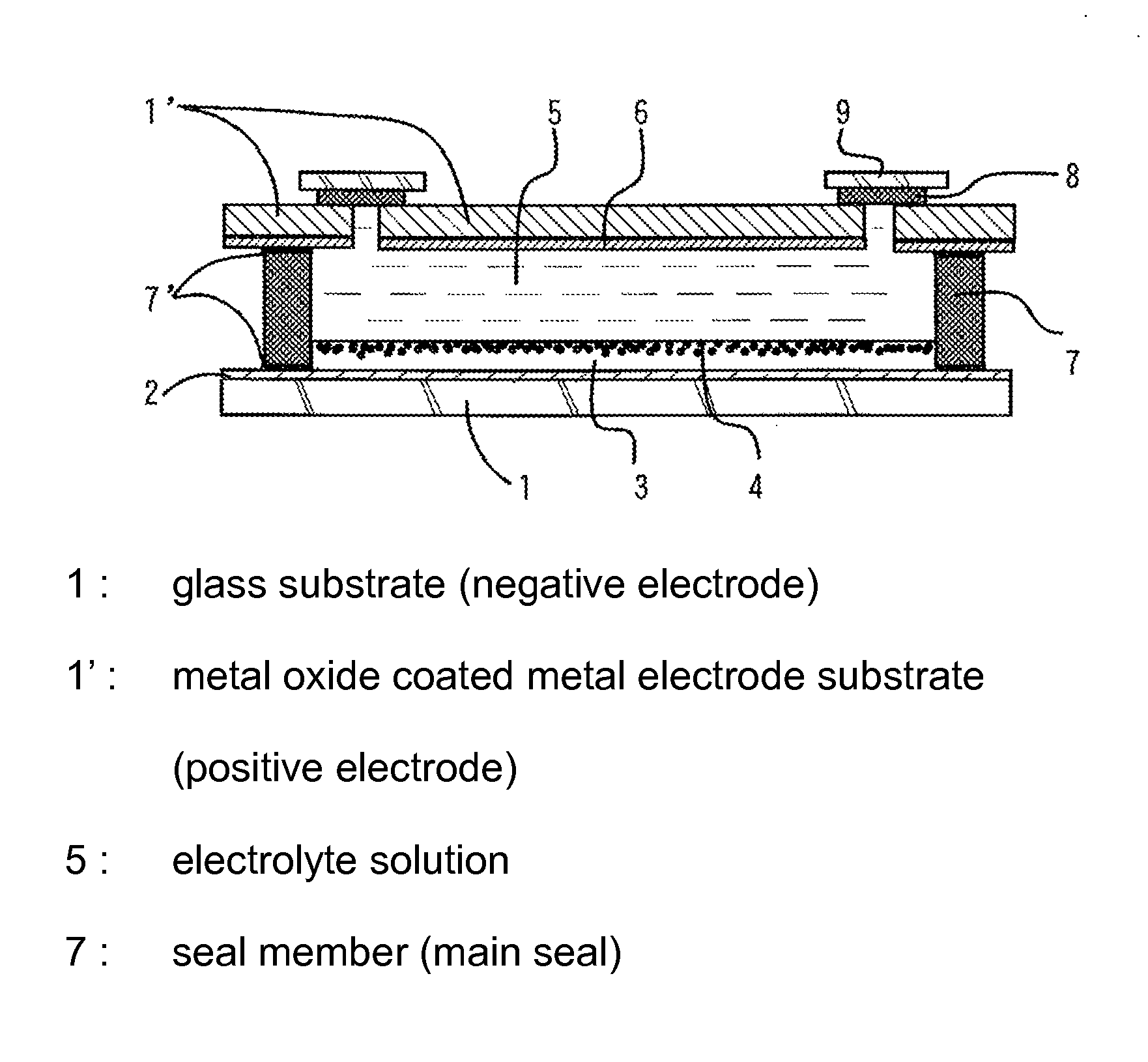Dye-sensitized solar cell
a solar cell, dye-sensitized technology, applied in the direction of light-sensitive devices, solid-state devices, electrolytic capacitors, etc., can solve the problems of poor durability of dye-sensitized solar cells of this type, polar structure of dye-sensitized solar cells, and inability to prevent leakage of electrolyte solution and absorption of external moisture, etc., to achieve excellent photoelectric conversion efficiency, less expensive, and light weight
- Summary
- Abstract
- Description
- Claims
- Application Information
AI Technical Summary
Benefits of technology
Problems solved by technology
Method used
Image
Examples
example 1
[0135]The following components were prepared by the following methods (I-a), (I-b) and (II), and a dye-sensitized solar cell was assembled in the following manner (III).
(I-a) Preparation of Glass Substrate Having Transparent Electrically Conductive Electrode and Glass Substrate Portion Surface-Coated with Specific Silane Coupling Agent to be Brought into Contact with Seal Member
[0136]A glass substrate (hereinafter sometimes referred to as “negative electrode substrate”) (10 cm×10 cm×3 mm (thickness)) having an ITO transparent electrically conductive film and a titanium oxide semiconductor film provided on the ITO transparent electrically conductive film with L-4,4′-dicarboxy-2,2′-bipyridyl (N3 dye) adsorbed thereon was prepared. Then, a methanol solution of 1 wt % 3-acryloxypropyltrimethoxysilane was prepared, and applied onto a portion of the negative electrode substrate formed with the electrically conductive film to be brought into contact with a seal member, and dried at 100° C....
example 2
[0141]A dye-sensitized solar cell was assembled in substantially the same manner as in Example 1, except that a methanol solution of 3-methacryloxypropyltrimethoxysilane (having a concentration of 1 wt %) was used as the silane coupling agent instead of the 3-acryloxypropyltrimethoxysilane solution of Example 1 and applied onto the portion of the glass substrate (negative electrode substrate) to be brought into contact with the seal member.
example 3
[0142]A dye-sensitized solar cell was assembled in substantially the same manner as in Example 1, except that a photopolymerizable composition prepared by blending 7 g of the hydrogenated elastomer derivative (a), 3 g of dimethyloldicyclopentane diacrylate (tricyclodecanedimethanol diacrylate) and 0.5 g of the photo-radical polymerization initiator was used instead of the photopolymerizable composition (A) of Example 1.
PUM
 Login to View More
Login to View More Abstract
Description
Claims
Application Information
 Login to View More
Login to View More - R&D
- Intellectual Property
- Life Sciences
- Materials
- Tech Scout
- Unparalleled Data Quality
- Higher Quality Content
- 60% Fewer Hallucinations
Browse by: Latest US Patents, China's latest patents, Technical Efficacy Thesaurus, Application Domain, Technology Topic, Popular Technical Reports.
© 2025 PatSnap. All rights reserved.Legal|Privacy policy|Modern Slavery Act Transparency Statement|Sitemap|About US| Contact US: help@patsnap.com



